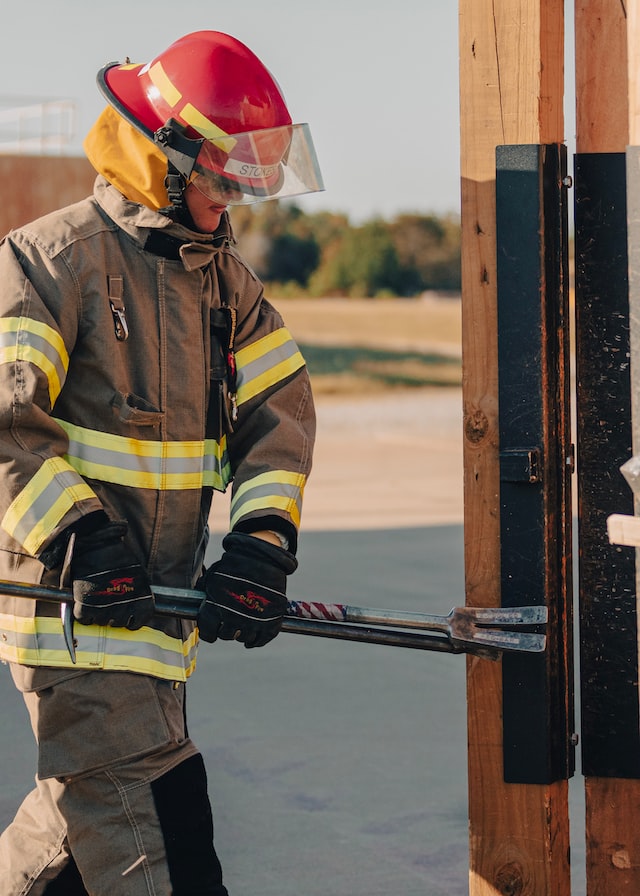Have you ever wanted to become a firefighter? It takes hard work, dedication, and passion for becoming one of the brave men and women who dedicate their lives to protecting us. If you have ever thought about becoming a firefighter, this guide is for you. Keep reading to learn more about the firefighter academy and what it takes to become a firefighter.

George Bachmann, a retired FDNY firefighter, reflects on the unique mindset and character required to be a firefighter and enter burning buildings.
What is Firefighter Academy and what does it entail?
A firefighter academy or fire academy is an institution that offers specialized training for individuals interested in becoming firefighters. It provides a comprehensive curriculum that covers everything from basic first aid and emergency medical techniques to hazardous materials response and wildland firefighting techniques. Some fire academies even offer leadership, communication, and public relations classes.
A fire academy must meet the minimum requirements defined by NFPA 1001. The complete guide outlines the knowledge, skills, and abilities necessary to complete this program successfully. It usually takes 100-600 hours (or 10-24 weeks) to complete this training program.
Some academies may offer additional remedial or advanced training opportunities depending on your experience level or specific interests. During remedial training, students review learned topics to ensure that all relevant information is retained and understood. Students that excel can also take advanced courses or test out specific areas to explore more specialized topics within their field of study.
Is the fire academy paid training?
In most cases, fire academies are paid training. Most fire departments offer paid training for their recruits. During this time, the firefighters receive salary and benefits.

What are the topics covered in a fire academy training?
From emergency medical technician training and emergency response skills to physical training and hazardous materials operations, the academy is designed to equip individuals with the knowledge they need to be successful in their firefighting careers.
Firefighter 1 Certification
The Firefighter 1 certification covers the basics of firefighting, such as basic firefighter training, live fire training, fire behavior, fire science, national incident management system (NIMS), and other firefighting tactics.
Firefighter 2 Certification
The Firefighter 2 certification builds upon the skills learned in the Firefighter 1 certification by focusing on advanced skills. The emphasis is on developing critical thinking and problem-solving skills to respond appropriately in any given situation.
Obtaining Firefighter 2 certification is essential for those who wish to advance their career in the fire service.
Fire Behavior & Fire Science Training
One of the most important components of becoming a certified firefighter is studying fire behavior and fire science. This includes understanding the combustion process as well as how fires spread and what factors can cause them to grow in size or intensity. It also involves learning about building construction and its impact on how fires behave in different types of buildings or structures.
National Incident Management System
Firefighters must also learn about the National Incident Management System (NIMS). The NIMS provides a framework for responding quickly and efficiently in emergencies by outlining the roles and responsibilities of all personnel involved in an incident response effort. The NIMS also helps ensure that everyone has access to accurate information during an emergency so firefighters can make effective decisions quickly.
Firefighting Tactics & Techniques
In addition to studying fire behavior and science, firefighters must also learn various tactics and techniques to battle blazes. From using ladders safely while on roofs or balconies to controlling ventilation points inside burning buildings, firefighters must know how best to attack a fire from inside and outside the building. With proper training, firefighters will gain experience recognizing dangerous conditions and how best to control them before they get out of hand.

What is the best way to get into the Fire Academy?
There’s no one-size-fits-all answer. Depending on your jurisdiction, there are different paths you can take.
Fire Department-based Academy:
This is the most traditional route taken. In this scenario, the municipality has an academy through their fire department with their instructors.
The instructors have typically experienced firefighting themselves. They provide theoretical and practical training on fire suppression, hazardous materials, and medical operations.
Fire department-based academy is typically for aspiring firefighters who want to work for that particular fire department or jurisdiction.
Third-Party Academy:
Not all fire departments have the capacity or resources to host their own academy. As such, many jurisdictions opt for third-party academies.
In this case, a private agency operates the fire academy. Their program is available for those hoping to work in multiple jurisdictions/departments rather than just one.
College-based Academy:
Colleges and universities offer this type of fire academy training in partnership with fire departments for potential students without prior experience understanding the profession.
These programs usually combine classroom instruction with hands-on training courses to provide students with the necessary skills and knowledge required for entry-level positions in fire services agencies at municipal and state levels.
What are the general requirements?
Before being accepted into any academy, you must meet some basic requirements.
These usually include:
- having a high school diploma or GED
- being 18 years old or older
- having a valid driver’s license
Check with each fire academy, as they all have slightly different requirements regarding age limits and education qualifications.
The application process may differ from organization to organization, but many require applicants to pass written tests and physical exams before the fire academy accepts them.
Every jurisdiction has standards for physical fitness, physical ability, and mental conditioning. Depending on the fire department and their selection criteria, some recruits may be selected to undergo a shorter academy program.
In contrast, others may need to complete a full academy before entering the fire service. For first-time applicants, many departments typically include a background check, mental health screening, aptitude test, CPAT, and medical examination.
Entering a fire academy is an excellent way to acquire the necessary skills to become a firefighter.


